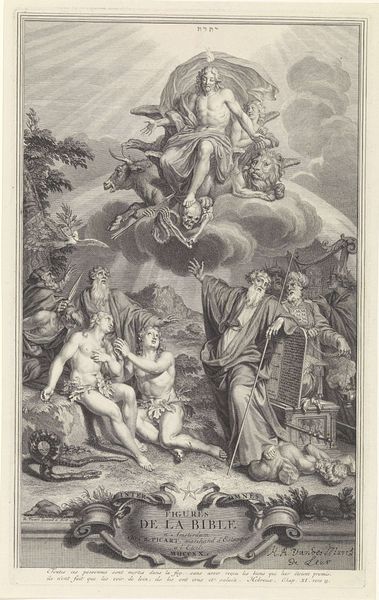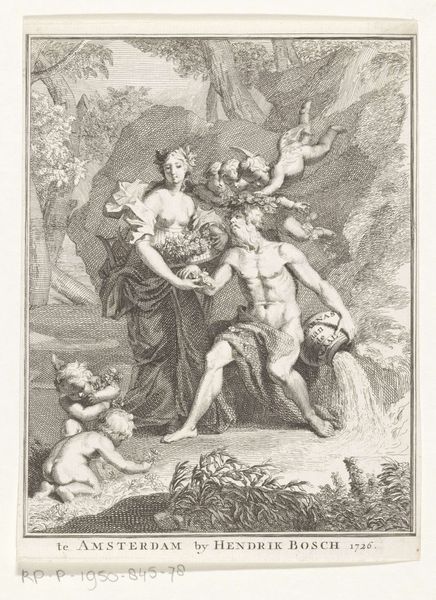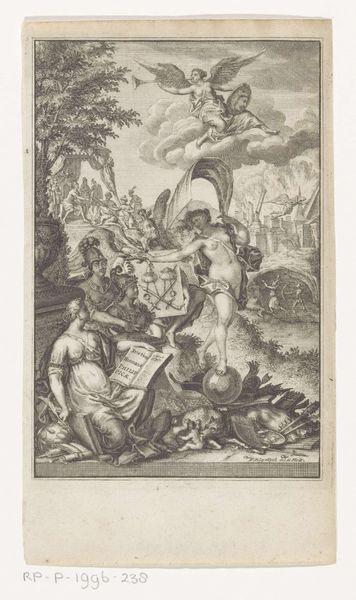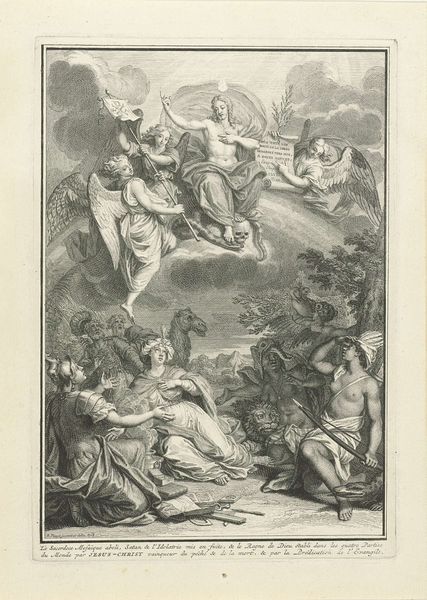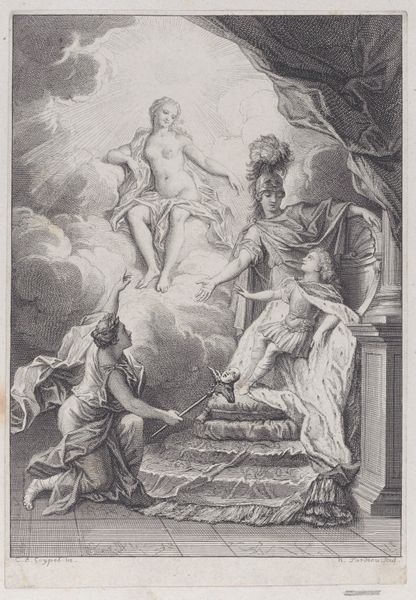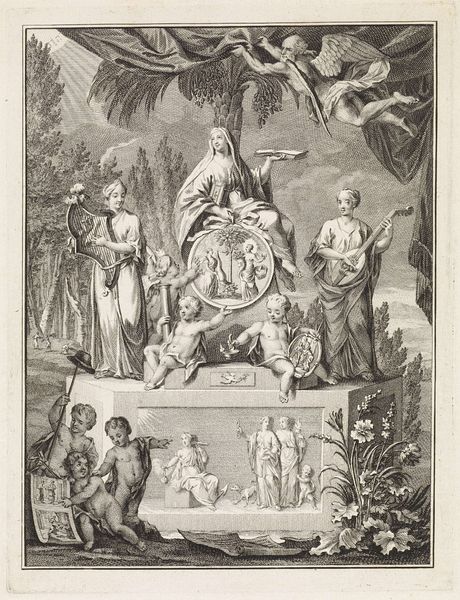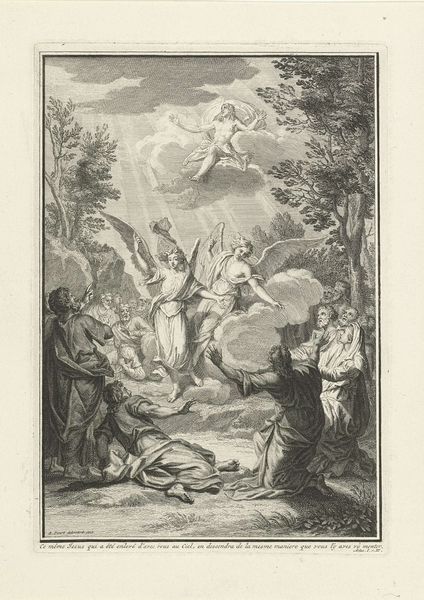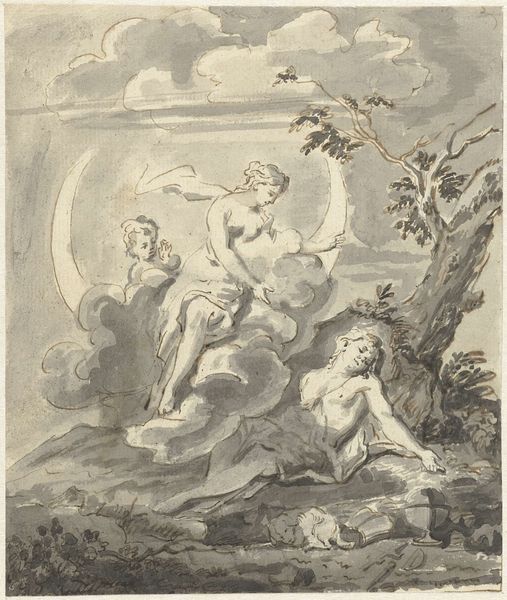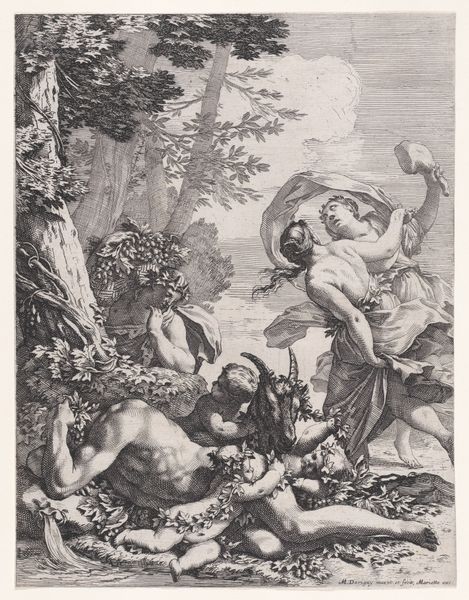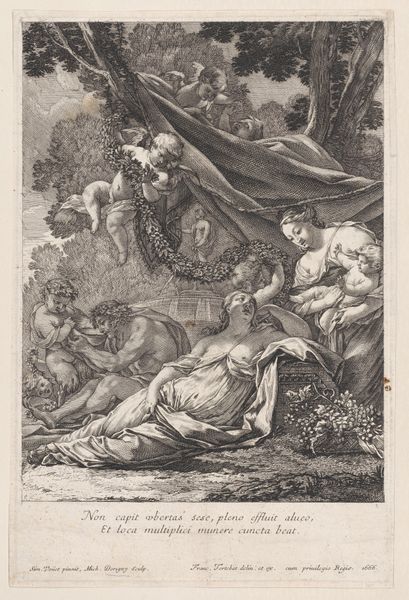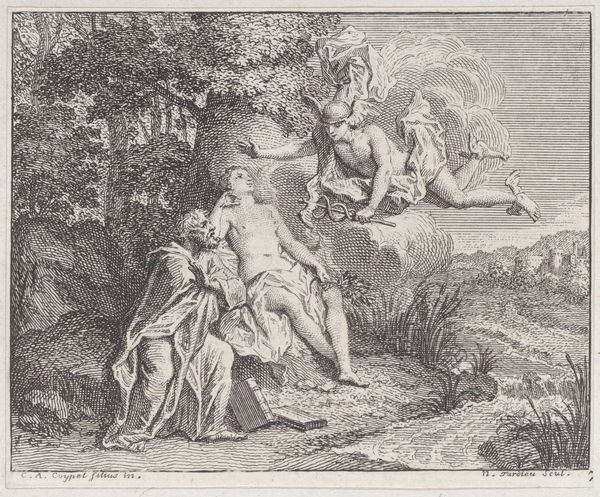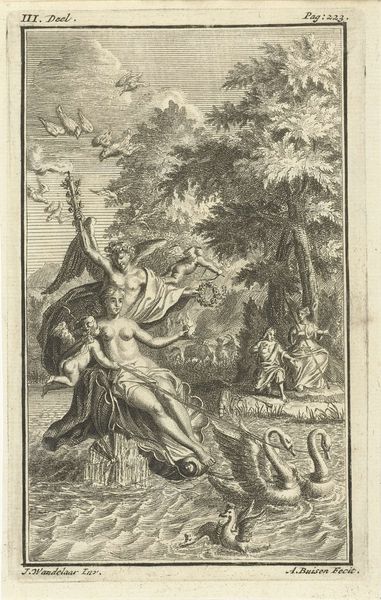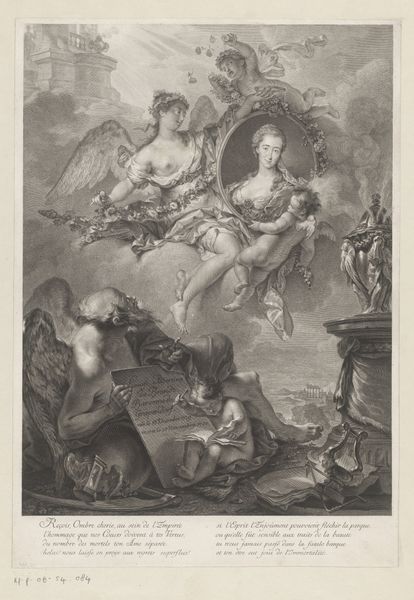
print, engraving
#
allegory
#
baroque
# print
#
landscape
#
figuration
#
history-painting
#
engraving
Dimensions: height 365 mm, width 227 mm
Copyright: Rijks Museum: Open Domain
Curator: Oh, what a bewildering tapestry! This 1720 engraving, "Landschap met figuren uit het Oude Testament," or "Landscape with figures from the Old Testament" by Bernard Picart really throws a lot at you at once, doesn't it? Editor: Absolutely. My immediate impression is of a dreamscape layered with heavy symbolism. The monochrome gives it this almost haunting feel, like a faded memory being recalled. It looks like chaos and harmony dancing together in shades of grey. Curator: Indeed, Picart certainly has crammed every corner with biblical figures! Adam and Eve are here, we've got Moses brandishing his staff and the Ten Commandments… all set against a landscape that feels both epic and a little claustrophobic. I imagine contemporary viewers might find this visual density rather... overwhelming. Editor: I see this as a potent piece of religious propaganda, a time capsule encapsulating very particular theological perspectives. Look how God is depicted triumphing over death! And consider who is present – or perhaps more crucially, absent. The construction of power, the justification for obedience, all rooted in carefully selected narratives. Curator: That is insightful, thinking about absence and the narrative shaping it entails. It seems so rooted in a Baroque sensibility. These grand gestures, dramatic lighting– even in print, you can feel the theatrics of the era. All that, distilled onto a relatively small piece of paper. It feels…intense, you know? Like holding a thundercloud in your hand. Editor: "Intense" is right. Think about how this work functioned in its own historical moment: engaging with themes of law, morality, divine judgment...and whose narratives these images ultimately served. Examining its themes helps reveal not only historical worldviews, but it also provides context for present debates surrounding ethics and societal norms. Curator: I will confess though, the allegorical clutter threatens to topple, if I look at it too long! But that tension almost embodies its message, like, grappling with complex theology. I almost admire Picart's daring to overload a scene to the point of… wonderment. Editor: Yes, ultimately "wonderment" might also be what Bernard Picart desired his viewers to achieve, leading his art, for us, to continue the dialogues within it. Thank you.
Comments
No comments
Be the first to comment and join the conversation on the ultimate creative platform.
